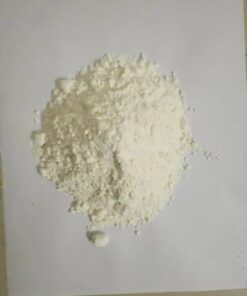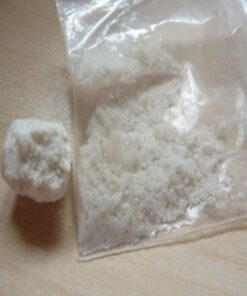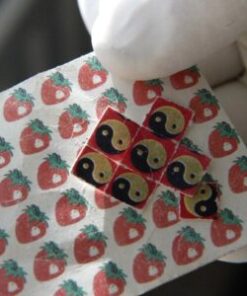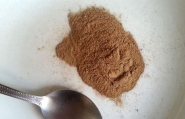Order MXE (Methoxetamine) Online
$70.00 – $2,570.00Price range: $70.00 through $2,570.00
Order MXE (Methoxetamine) Online|Buy MXE (Methoxetamine) Online|Purchase MXE (Methoxetamine) Near Me
Introduction to MXE (Methoxetamine)
Order MXE (Methoxetamine) Online , MXE (Methoxetamine) is a synthetic dissociative anesthetic that has garnered attention for its unique psychoactive properties. Often compared to ketamine, MXE has distinct characteristics that set it apart. This guide delves into the history, effects, uses, risks, and legal status of MXE, providing comprehensive information for those interested in this substance.
What is MXE (Methoxetamine)?
Chemical Composition and Structure
Methoxetamine, commonly abbreviated as MXE, is a chemical compound that belongs to the arylcyclohexylamine class. Its chemical structure is similar to that of ketamine and PCP, featuring a phenyl ring, a cyclohexane ring, and an amine group. The molecular formula of MXE is C15H21NO2, and its systematic name is 2-(3-methoxyphenyl)-2-(ethylamino)cyclohexanone.
Development and History
MXE was first synthesized in 2010 by a team of researchers looking to create a dissociative anesthetic with properties similar to ketamine but with a longer duration and fewer side effects. It quickly gained popularity in the research chemical market and among recreational users. Despite its relatively recent emergence, MXE has already left a significant mark on the world of psychoactive substances.
Effects of MXE (Methoxetamine)
Psychoactive Effects
MXE is known for its powerful dissociative and hallucinogenic effects. These effects can vary depending on the dosage, the individual, and the environment. Common psychoactive effects include:
- Dissociation: Users often experience a sense of detachment from their body and surroundings, similar to the “K-hole” effect associated with ketamine.
- Euphoria: Many users report feelings of intense pleasure and well-being.
- Hallucinations: Visual and auditory distortions are common, ranging from subtle changes to vivid, immersive experiences.
- Altered Perception of Time and Space: Time may appear to slow down or speed up, and spatial boundaries can become distorted.
Physical Effects
In addition to its psychoactive properties, MXE can cause various physical effects, including:
- Numbness: A common side effect is a loss of sensation, particularly in the limbs.
- Motor Impairment: Users may experience difficulty with coordination and balance.
- Increased Heart Rate: MXE can cause a temporary increase in heart rate and blood pressure.
- Nausea and Vomiting: Some users report gastrointestinal discomfort, especially at higher doses.
Duration of Effects
The onset of MXE’s effects typically occurs within 15-30 minutes of ingestion, with peak effects lasting 3-5 hours. The total duration of the experience can extend to 6-8 hours, depending on the dose and individual metabolism.
Uses of MXE (Methoxetamine)
Recreational Use
MXE is primarily used recreationally for its dissociative and euphoric effects. Users often seek the unique experiences it offers, including intense hallucinations and altered states of consciousness. It is commonly taken orally, but can also be insufflated (snorted) or injected.
Potential Therapeutic Uses
While MXE is not approved for medical use, some researchers have explored its potential therapeutic applications. These include:
- Depression: Similar to ketamine, MXE has shown promise in treating depression, particularly in individuals who do not respond to traditional antidepressants.
- Chronic Pain: Its anesthetic properties suggest potential use in managing chronic pain conditions.
- PTSD: Some studies indicate that MXE might help alleviate symptoms of post-traumatic stress disorder (PTSD) by facilitating emotional processing and reducing anxiety.
Risks and Side Effects of MXE (Methoxetamine)
Short-Term Risks
While MXE can provide pleasurable and therapeutic effects, it also carries significant risks, especially with misuse. Short-term risks include:
- Psychological Distress: High doses or uncontrolled settings can lead to anxiety, paranoia, and panic attacks.
- Accidents and Injuries: Impaired motor skills and coordination increase the risk of accidents and injuries.
- Overdose: Taking excessive amounts of MXE can lead to severe respiratory depression, unconsciousness, and potentially fatal outcomes.
Long-Term Risks
Prolonged use of MXE can result in several long-term health issues, including:
- Psychological Dependence: Users may develop a psychological dependence on MXE, seeking its effects compulsively.
- Cognitive Impairment: Chronic use can lead to memory deficits, reduced attention span, and other cognitive impairments.
- Bladder and Kidney Damage: Similar to ketamine, MXE has been associated with urinary tract problems, including cystitis and renal damage.
Interactions with Other Substances
MXE can interact dangerously with other substances, particularly depressants like alcohol and benzodiazepines. These combinations can potentiate the effects of MXE, increasing the risk of respiratory depression and overdose.
Legal Status of MXE (Methoxetamine)
International Regulations
The legal status of MXE varies widely around the world. In many countries, it is classified as a controlled substance, making its manufacture, distribution, and possession illegal. However, in some regions, it remains unregulated, leading to its availability on the grey market.
United States
In the United States, MXE is classified as a Schedule I controlled substance under the Controlled Substances Act, indicating it has a high potential for abuse and no accepted medical use. This classification makes it illegal to manufacture, possess, or distribute MXE in the U.S.
Europe
In Europe, several countries, including the United Kingdom, Germany, and France, have classified MXE as a controlled substance. The European Union has also implemented regulations to control its distribution and use.
Other Regions
The legal status of MXE varies in other regions, with some countries adopting strict prohibitions and others lacking specific regulations. It is essential to research and understand the legal status of MXE in your region before use.
Safe Use and Harm Reduction
Dosage Guidelines
To minimize risks, it is crucial to adhere to safe dosage guidelines when using MXE. For new users, a low dose of 10-20 mg is recommended to gauge sensitivity. Experienced users may take up to 50 mg, but exceeding this amount significantly increases the risk of adverse effects.
Setting and Environment
Using MXE in a safe, controlled environment can enhance the experience and reduce risks. A familiar setting with trusted friends or a trip sitter can provide support if needed. Avoid using MXE in unfamiliar or risky environments.
Hydration and Nutrition
Staying hydrated and maintaining proper nutrition can help mitigate some physical side effects of MXE, such as nausea and gastrointestinal discomfort. Light snacks and plenty of water are recommended.
Avoid Mixing with Other Substances
To minimize the risk of dangerous interactions, avoid mixing MXE with other substances, particularly depressants like alcohol and benzodiazepines. Combining MXE with stimulants or other psychedelics can also lead to unpredictable and potentially harmful effects.
Recognize and Respond to Overdose
Recognizing the signs of an MXE overdose, such as severe confusion, unconsciousness, or respiratory distress, is crucial. In the event of an overdose, seek immediate medical attention and provide supportive care until help arrives.
Research and Future Directions
Clinical Studies
While recreational use of MXE is widespread, clinical studies on its therapeutic potential are limited. Research is needed to explore its efficacy and safety in treating conditions like depression, PTSD, and chronic pain.
Legal and Regulatory Changes
As our understanding of MXE evolves, changes in its legal and regulatory status may occur. Ongoing research and advocacy could influence policy decisions, potentially leading to the development of safe, controlled uses of MXE in medical settings.
Public Health Initiatives
Public health initiatives focused on education and harm reduction can help mitigate the risks associated with MXE use. Providing accurate information and resources to users can promote safer practices and reduce the incidence of adverse effects.
Conclusion
MXE (Methoxetamine) is a powerful dissociative anesthetic with unique psychoactive properties. While it offers potential benefits, particularly in therapeutic settings, it also carries significant risks. Understanding the effects, safe use practices, and legal considerations of MXE is essential for those interested in this substance. As research continues to uncover its potential and risks, responsible use and harm reduction remain paramount.
FAQs about MXE (Methoxetamine)
What are the signs of an MXE overdose?
Signs of an MXE overdose include severe confusion, unconsciousness, difficulty breathing, and unresponsiveness. If you suspect an overdose, seek medical attention immediately.
Can MXE cause long-term brain damage?
Prolonged use of MXE can lead to cognitive impairments, including memory deficits and reduced attention span. While there is limited research on long-term brain damage, chronic use is associated with various cognitive and psychological issues.
Is MXE addictive?
MXE can be psychologically addictive, leading to compulsive use and dependence. Users may develop a tolerance, requiring higher doses to achieve the desired effects, which increases the risk of adverse outcomes.
How does MXE compare to ketamine?
MXE and ketamine have similar dissociative and anesthetic properties, but MXE is often described as having a longer duration and more intense psychoactive effects. Both substances carry similar risks, including psychological dependence and physical health issues.
What should I do if I experience a bad trip on MXE?
If you experience a bad trip on MXE, try to stay calm and remember that the effects are temporary. Seek support from a trusted friend or trip sitter, change your environment.
| Qty/Price | 2g, 5g, 10g, 25g, 50g, 100g, 250, 500g, 1kg |
|---|
Be the first to review “Order MXE (Methoxetamine) Online” Cancel reply
Related products
Buy Research Chemicals
Buy Psychedelic Drugs
Buy Psychedelic Drugs
Buy LSD Online
Buy Psychedelic Drugs
Buy Psychedelic Drugs
Buy LSD Online
Buy Psychedelic Drugs

















Reviews
There are no reviews yet.